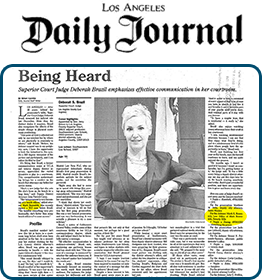A Defense Counsel Should Possess Adequate Knowledge When Examining an Expert Witness
Mark Rosenfeld: However in Respondent’s case, there’s actually four peaks, not two.
Expert: I would agree that there is one that’s also visible between the ethanol and the n propanol peak, which is given at retention time 1.078 minutes, and I see that there is a minor peak just before the ethanol peak, it’s 0.736 minutes.
Mark Rosenfeld: When you run your internal standards and your quality control checks, are those other peaks at 0.736 minutes and 1.078 minutes present in the quality control?
Expert: No, they should not be.
It Is Possible for a Blood Sample to Be Tainted by the Presence of a Contaminant
Mark Rosenfeld: What, what are, let’s just start with the one in between the ethanol and the n propanol. At 1.078 minutes there is a peak, what is it?
Expert: I haven’t to this day identified what that peak is.
Mark Rosenfeld: Is it possible that it’s a contaminant?
Expert: Uh, well, by contaminant, if we say that it is simply peak that we’re not interested in including in the analysis, uh, yes, that is safe to say.
Mark Rosenfeld: Okay. Now, with the peak before the ethanol peak, at 0.736, is that a contaminant?
Expert: Well, I again, I also would agree that that is an additional chemical compound like the first, that we’re not interested in clearing in the analysis or considering.
Mark Rosenfeld: Okay. Do you know what that peak is at 0.736 minutes?
Expert: No.
Mark Rosenfeld: Okay. In order for there to be a, an accurate ethanol peak, it must be sufficiently separated from any other compounds, correct?
Expert: Yes, that’s correct.
Any Inconsistency in a Blood Report Can Be Utilized as a Viable Defense
Mark Rosenfeld: Does the first peak, the unknown peak at 0.736 reach the baseline at the end of the peak?
Expert: Well, the uh, the clear graphic system has deduced that by including the check mark where the peak, the end of peak elution time, uh….
Mark Rosenfeld: That’s the…the computer saying, we are saying that the peak ends here, but I’m asking you as the analyst, does the peak reach the baseline?
Expert: It does not reach the uh, established baseline at the beginning of run.
Mark Rosenfeld: So that is inconsistent with the method that your lab uses in analyzing ethanol is gas chromatography?
Expert: Well it’s a… I’m, I hesitate to say it’s inconsistent with the method; it’s acceptable with the method that we use.
Mark Rosenfeld: Is there separation between the first peak and the second peak?
Expert: There is no absolute baseline separation between those two peaks.
Mark Rosenfeld: As chromatography is a separation science?
Expert: Yes, that is correct.
Only an Accurate Reading May Be Considered a Legitimate Piece of Evidence
Mark Rosenfeld: In order for there to be a good, accurate, trustworthy sample, there should be separation between the first and the second peak.
Expert: Well, that’s not always required in our analyses. There should be a sufficient amount of separation, so that it doesn’t interfere substantially with what you’re trying to analyze.
Mark Rosenfeld: And in this case there is no separation.
Expert: There, there is a, there is a separation, it’s not absolute.
Mark Rosenfeld: Okay. Does the ethanol peak have a tail?
Expert: It does, yes.
Mark Rosenfeld: Does the n propanol peak have a tail?
Expert: Yes, it does.
Mark Rosenfeld: Are those tails what you would like to see in good chromatography?
Expert: Well, those tails are often seen in chromatography done in all cases. It’s not the ideal situation from an ideal column.






 Personal Attention
Personal Attention Every criminal case is unique and no attorney can guarantee the outcome of a case. The information on this site is legal advertising and for general information only. Using this site, requesting books, information, consultations or communicating with Attorney Rosenfeld through its site does not form an attorney/client relationship.
Every criminal case is unique and no attorney can guarantee the outcome of a case. The information on this site is legal advertising and for general information only. Using this site, requesting books, information, consultations or communicating with Attorney Rosenfeld through its site does not form an attorney/client relationship.








